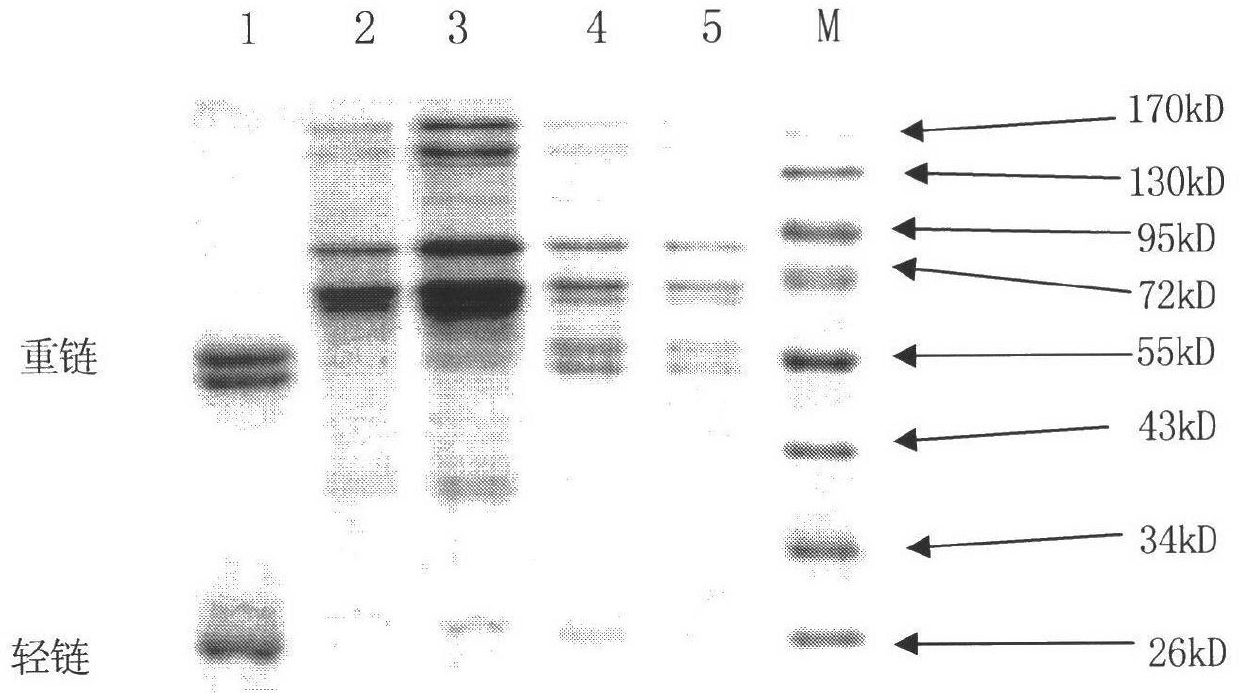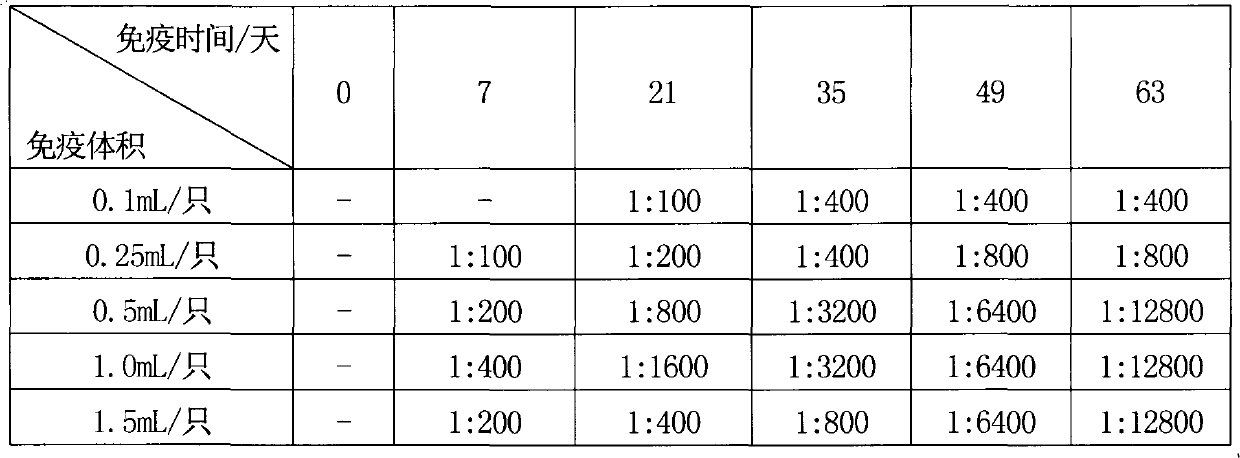Preparation method for rat-derived polyclonal antibody of thermoduric bacteria
A polyclonal antibody and polyclonal antiserum technology, which is applied in the preparation methods of peptides, chemical instruments and methods, antibacterial immunoglobulins, etc. lock and other problems, to achieve the effect of high purity, good specificity and simple method
- Summary
- Abstract
- Description
- Claims
- Application Information
AI Technical Summary
Problems solved by technology
Method used
Image
Examples
Embodiment 1
[0018] 1. Preparation of thermostable bacteria suspension
[0019] Transfer the standard strain of heat-resistant bacteria (A.acidoterrestris DSM 3922) to 250 mL of 402 medium, place it in an air bath at 45°C for shaking culture for 8 hours, transfer it to Kjeldahl medium, and cultivate it at 41°C for 24 hours, and use Rinse the heat-resistant bacteria cultured on the Kjeldahl medium with sterile saline, transfer the washed heat-resistant bacteria to a sterile conical flask, mix well, centrifuge at 3500 rpm for 30 minutes, discard the supernatant, and use for precipitation. Wash with normal saline for 3 times, add sterile normal saline to the precipitate, and dilute to a concentration of 2×10 9 CFU / mL of thermostable bacterial suspension.
[0020] 2. SD rats were immunized with thermostable bacteria
[0021] Mix 2mL of heat-resistant bacteria suspension and 2mL of immune adjuvant evenly, ultrasonically oscillate until fully emulsified, and immunize male SD rats by multi-poin...
Embodiment 2
[0027] In the step 1 of preparing the thermostable bacteria suspension in Example 1, the precipitate was diluted with sterile physiological saline to a concentration of 1.4×10 8 CFU / mL of heat-resistant bacterial suspension; in step 2 of heat-resistant bacteria immunized SD rats, the concentration of 2mL was 1.4×10 8 Mix CFU / mL heat-resistant bacteria suspension with 2mL immune adjuvant evenly, ultrasonically oscillate until fully emulsified, and immunize male SD rats by multi-point injection through the back muscle. Complete adjuvant, and then 5 booster immunizations with Freund's incomplete adjuvant, the time interval between each immunization was two weeks, the eyeballs were removed for 77 days after immunization, and blood was collected to prepare murine polyclonal antiserum for heat-resistant bacteria. Other steps are identical with embodiment 1.
Embodiment 3
[0029] In the step 1 of preparing the thermostable bacteria suspension in Example 1, the precipitate was diluted with sterile physiological saline to a concentration of 4 × 10 9 CFU / mL of heat-resistant bacteria suspension; in step 2 of heat-resistant bacteria immunized SD rats, the concentration of 2mL was 4×10 9 Mix the CFU / mL heat-resistant bacteria suspension with 2mL immune adjuvant evenly, ultrasonically oscillate until fully emulsified, and immunize male SD rats through multi-point injections in the back muscles. The volume of the immunogen is 0.5mL / rat. Complete adjuvant, and then 6 booster immunizations with Freund's incomplete adjuvant, the time interval between each immunization was two weeks, the eyeballs were removed for 91 days after immunization, and blood was collected to prepare murine polyclonal antiserum for thermostable bacteria. Other steps are identical with embodiment 1.
PUM
 Login to View More
Login to View More Abstract
Description
Claims
Application Information
 Login to View More
Login to View More - R&D Engineer
- R&D Manager
- IP Professional
- Industry Leading Data Capabilities
- Powerful AI technology
- Patent DNA Extraction
Browse by: Latest US Patents, China's latest patents, Technical Efficacy Thesaurus, Application Domain, Technology Topic, Popular Technical Reports.
© 2024 PatSnap. All rights reserved.Legal|Privacy policy|Modern Slavery Act Transparency Statement|Sitemap|About US| Contact US: help@patsnap.com










